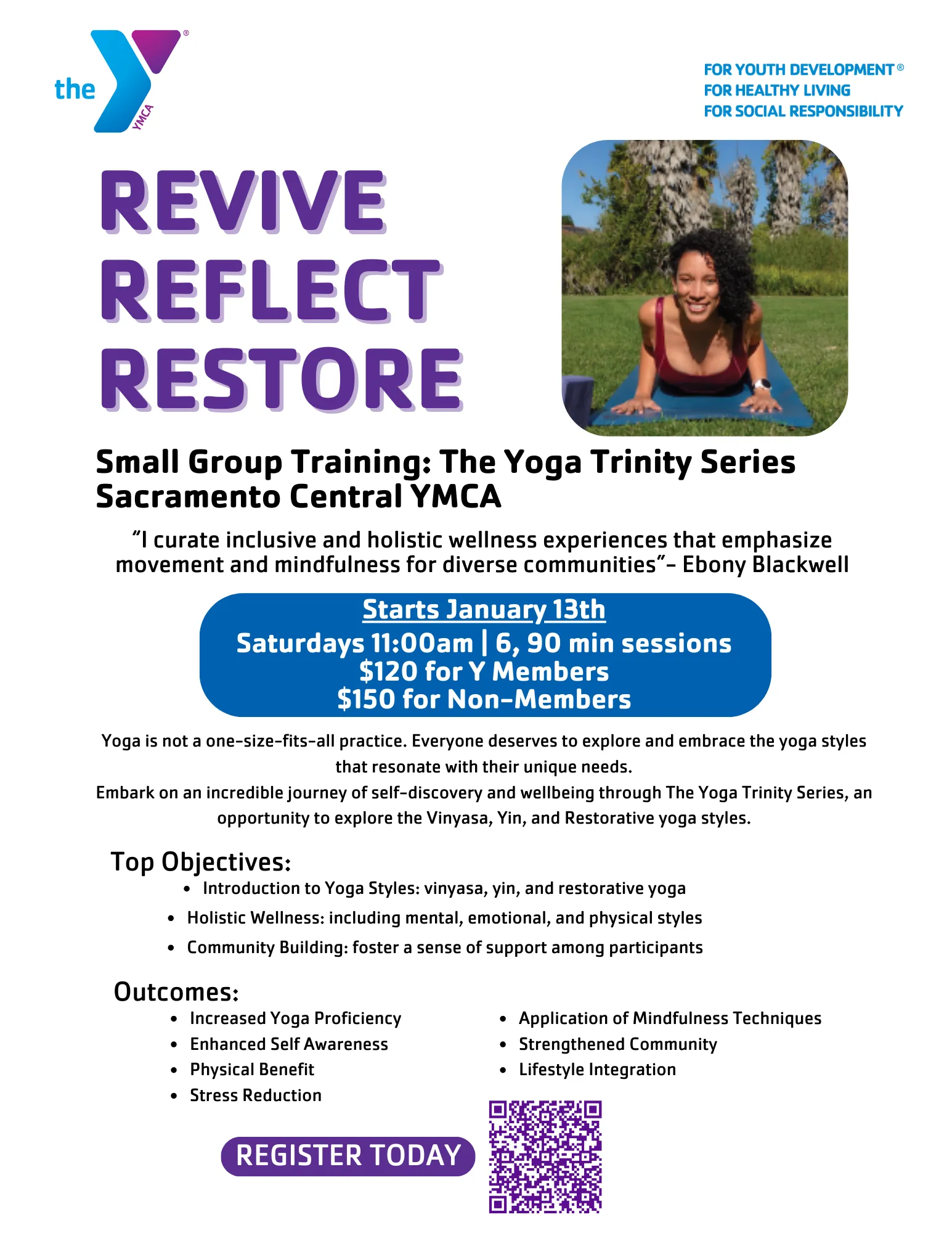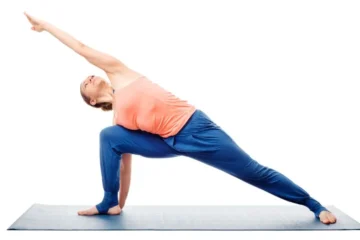Mindful Restoration offers restorative yoga for mental wellness, promoting relaxation and emotional balance. With gentle postures and breath work, this practice aims to reduce stress and improve mental clarity.
In today’s fast-paced world, many people struggle with stress, anxiety, and burnout. Mindful Restoration provides a space for individuals to unwind and recharge, offering a holistic approach to mental well-being.
By combining gentle yoga poses, deep breathing, and meditation, this practice helps alleviate the effects of daily stress and promotes a sense of inner calm.
Whether you’re a beginner or an experienced yogi, the restorative yoga sessions at Mindful Restoration are designed to provide a sanctuary for relaxation and self-discovery. Through mindful movement and intentional breathing, participants can cultivate a deeper connection between mind, body, and spirit, contributing to overall mental wellness.
What Is Restorative Yoga?
Restorative yoga is a gentle and therapeutic style of yoga that focuses on relaxation and rejuvenation. Unlike other dynamic and active forms of yoga, restorative yoga is all about slowing down, releasing tension, and allowing the body and mind to fully unwind.
Benefits Of Restorative Yoga
Restorative yoga offers numerous benefits for mental wellness and overall well-being. Some key benefits include:
- Stress relief: Restorative yoga helps alleviate stress and anxiety by slowing down the body and activating the relaxation response.
- Improves sleep quality: The deep relaxation and gentle movements of restorative yoga can improve sleep quality and help combat insomnia.
- Enhances self-awareness: Restorative yoga encourages mindfulness and deepens the mind-body connection, enhancing self-awareness and self-reflection.
- Boosts mood and mental clarity: By easing stress and promoting relaxation, restorative yoga can help improve mood, increase mental clarity, and reduce feelings of overwhelm.
- Supports physical healing: Restorative yoga can complement traditional medical treatments and support the body’s natural healing process, making it beneficial for individuals recovering from injuries or illness.
How Restorative Yoga Works
Restorative yoga works by using props such as blankets, bolsters, and blocks to support the body in passive poses. These supported poses allow the muscles to relax deeply, releasing tension and allowing the body to let go. By maintaining these poses for extended periods, restorative yoga activates the parasympathetic nervous system, also known as the “rest and digest” response.
During a restorative yoga practice, the focus is on breath awareness and mindful presence. By consciously attending to the breath and sensations in the body, practitioners cultivate a state of deep relaxation and restore balance to the nervous system. The restorative nature of this practice allows the body and mind to find a state of equilibrium, promoting mental wellness and reducing the negative effects of chronic stress.
Restorative yoga is suitable for individuals of all fitness levels, including beginners and those with limited mobility. It is a gentle and accessible form of yoga that can be practiced by anyone seeking relaxation, restoration, and mental well-being.
The Mind-body Connection
The Mind-Body Connection is a fundamental aspect of our overall well-being. It is the intricate link between our physical and mental states, where the condition of one significantly impacts the other. Understanding and nurturing this connection is key to achieving holistic health and wellness.
Understanding The Mind-body Connection
Our thoughts and emotions directly influence the physical sensations and reactions within our bodies. Conversely, our bodily experiences, such as pain or tension, can affect our mental and emotional states. This interplay highlights the inseparable nature of the mind and body, underscoring the importance of addressing both aspects to achieve optimal health.
Impact Of Restorative Yoga On Mental Wellness
Restorative yoga, with its gentle, supportive postures and focus on deep relaxation, has a profound impact on the mind-body connection. It encourages a serene state of mind while simultaneously easing physical tension and discomfort. This practice nurtures mental wellness by promoting a sense of calm and reducing stress, which, in turn, positively influences the body’s physiological processes.
Techniques And Poses
When it comes to mental wellness, restorative yoga offers a gentle yet powerful way to promote mindful restoration. By incorporating specific techniques and poses, individuals can tap into the restorative benefits of yoga to alleviate stress, reduce anxiety, and foster a deeper sense of calm.
Key Techniques In Restorative Yoga
Restorative yoga revolves around a few key techniques that facilitate deep relaxation and mindfulness. The practice often involves breath awareness, gentle movement, and the use of props such as bolsters, blankets, and blocks to support the body in passive poses. With a focus on extended holds and gentle stretching, these techniques encourage the release of tension, allowing the mind to unwind and find relaxation.
Restorative Yoga Poses For Mental Wellness
Specific restorative yoga poses are particularly beneficial for mental wellness. These poses, often held for several minutes at a time, promote a sense of calm and relaxation. Some well-known restorative poses include supported child’s pose, reclining bound angle pose, and supported corpse pose. Each of these poses fosters a deep sense of release in the body and mind, providing a soothing escape from the pressures of daily life.

Credit: www.calm.com
Research And Evidence
Mindful Restoration: Discover the mental wellness benefits of restorative yoga through research and evidence. Improve your well-being with this gentle practice that promotes relaxation, stress reduction, and overall mental health.
Research and Evidence Scientific Studies on Restorative Yoga Restorative yoga, a gentle and calming practice, has gained popularity in recent years for its potential mental wellness benefits. Researchers have carried out numerous studies to delve into the effects of restorative yoga on mental health. These studies have provided valuable insights into the efficacy of this practice for promoting overall well-being.
Effects of Restorative Yoga on Mental Health Scientific evidence suggests that restorative yoga can be beneficial for mental health. Research conducted in this field has unearthed several positive effects of this practice on various mental health conditions.
1. Stress Reduction: Studies have shown that restorative yoga can significantly reduce stress levels. This practice incorporates deep breathing, gentle movements, and supported positions, providing a serene and soothing experience. Such an environment promotes relaxation, helping individuals unwind and alleviate stress.
2. Anxiety Management: Research indicates that practicing restorative yoga can aid in managing anxiety. This practice allows individuals to slow down and focus on the present moment, boosting mindfulness. By engaging in gentle stretches and deep relaxation, restorative yoga helps calm the mind and reduce anxiety symptoms.
3. Mood Enhancement: Restorative yoga has been found to have a positive impact on mood. Regular practice has shown to enhance feelings of well-being, reduce symptoms of depression, and increase overall happiness levels. This is attributed to the release of endorphins and the activation of the parasympathetic nervous system during restorative yoga sessions.
4. Sleep Improvement: Restorative yoga can also contribute to better sleep quality. Several studies have indicated that this practice can help individuals experiencing sleep difficulties by promoting relaxation, reducing overthinking, and improving sleep patterns. Restorative yoga’s emphasis on conscious breathing and gentle movements creates a conducive environment for restful sleep.
5. Post-Traumatic Stress Disorder (PTSD) Management: Research has explored the potential benefits of restorative yoga for individuals with PTSD. Preliminary findings suggest that this practice may assist in reducing symptoms of PTSD, such as hyperarousal and anxiety, through its calming and grounding effects.
Conclusion Scientific studies provide compelling evidence supporting the mental wellness benefits of restorative yoga. From stress reduction and anxiety management to mood enhancement and improved sleep quality, the potential impact of this practice on mental health is significant. Incorporating restorative yoga into one’s self-care routine may offer a holistic approach to achieving mental well-being.
Incorporating Restorative Yoga Into Daily Life
Restorative yoga is a powerful practice that not only helps relax the body but also promotes mental wellness. By incorporating restorative yoga into your daily life, you can create a deep sense of calm and restoration that carries over into all aspects of your day. This article will provide you with valuable tips and guidance on how to create a restorative yoga routine and practice it at home.
Creating A Restorative Yoga Routine
A restorative yoga routine can be easily incorporated into your daily life, providing you with a dedicated time for relaxation and restoration. Here are a few steps to help you create a restorative yoga routine:
- Find a quiet space: Choose a peaceful spot in your home where you can practice without distractions.
- Set a consistent time: Dedicate a specific time each day for your restorative yoga practice to create a routine.
- Gather props: Gather the necessary props like bolsters, blankets, and yoga blocks to support your comfort during the poses.
- Select gentle poses: Choose restorative yoga poses that focus on deep relaxation, such as Child’s Pose, Legs-Up-The-Wall, and Supported Reclining Bound Angle Pose.
- Practice deep breathing: Consistently incorporate deep breathing exercises into your routine to enhance relaxation and nourishment.
- Start with short sessions: Begin with shorter sessions of about 15-20 minutes per day and gradually increase the duration as you become more comfortable and experienced.
- Remain consistent: Aim to practice restorative yoga daily, even when your schedule gets busy, as the regularity will amplify the benefits and help integrate it into your life.
Tips For Practicing Restorative Yoga At Home
Practicing restorative yoga at home allows you to create a tranquil space catered to your own needs. Follow these practical tips to optimize your home practice:
- Create a calming atmosphere: Dim the lights, play soft music, or light candles to enhance the relaxation experience.
- Use essential oils: Incorporate calming scents like lavender or chamomile through aromatherapy or using a diffuser.
- Dress comfortably: Wear loose and comfortable clothing that allows freedom of movement and relaxation.
- Set up a cozy environment: Lay out your props in a way that supports your body and allows deep relaxation during each pose.
- Disconnect from technology: Turn off your phone or put it on silent mode to minimize distractions and fully immerse yourself in the practice.
- Practice self-compassion: Be patient with yourself during the practice, embracing any limitations or challenges without judgment.
- Listen to your body: Pay attention to how each pose feels in your body, modifying or adjusting as needed for your comfort and safety.
By incorporating restorative yoga into your daily life and practicing it at home with these tips, you can cultivate a deep sense of tranquility, release stress, and nurture your overall mental wellness. Make a commitment to prioritize your well-being and experience the transformative benefits of this gentle and rejuvenating practice.
Frequently Asked Questions Of Mindful Restoration: Restorative Yoga For Mental Wellness
What Is Restorative Yoga And How Does It Benefit Mental Wellness?
Restorative yoga is a gentle practice that uses props to support the body in relaxing postures. It helps activate the parasympathetic nervous system, reducing stress and promoting mental well-being. By slowing down and deeply relaxing, restorative yoga nourishes and restores the mind and body.
How Often Should I Practice Restorative Yoga For Mental Wellness?
To reap the mental wellness benefits of restorative yoga, aim to practice at least two to three times per week. Consistency is key, so even a short daily practice can make a difference. Listen to your body and adjust your practice based on your needs and schedule.
Can Restorative Yoga Help With Anxiety And Depression?
Yes, restorative yoga can be a supportive practice for managing anxiety and depression. By promoting relaxation, reducing stress levels, and increasing feelings of calm and well-being, it can help alleviate symptoms associated with these conditions. It is important to consult with a healthcare professional in conjunction with any medical treatment.
Conclusion
Incorporating restorative yoga into your routine can have profound effects on your mental wellness. By practicing mindfulness and gentle movements, you can alleviate stress, anxiety, and improve overall mental well-being. Restorative yoga offers a safe and accessible way to restore balance and find inner peace amidst the chaos of daily life.
Embrace this transformative practice and prioritize your mental wellness for a healthier and happier life.




